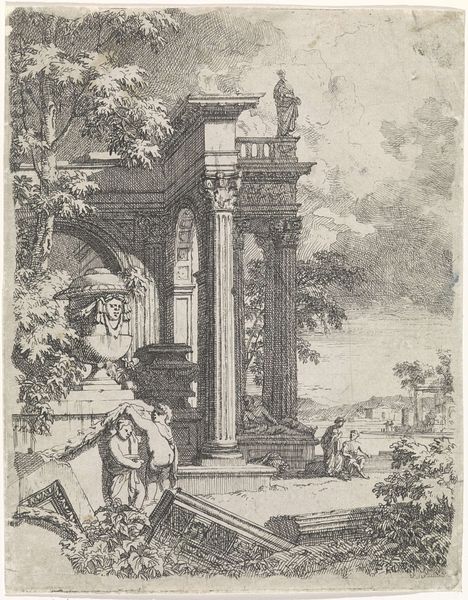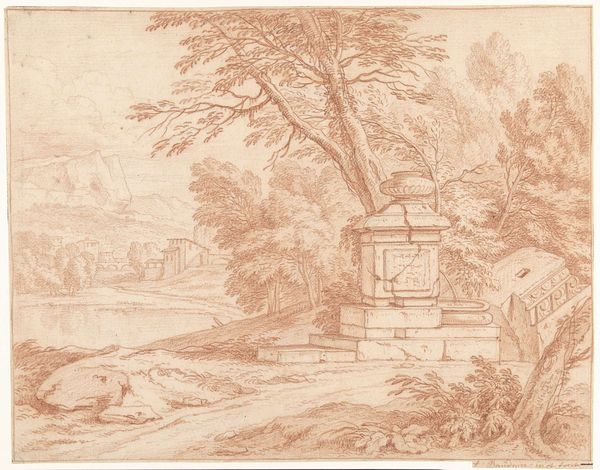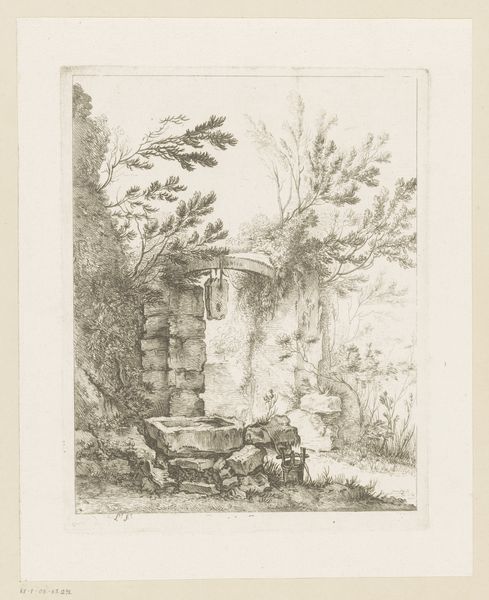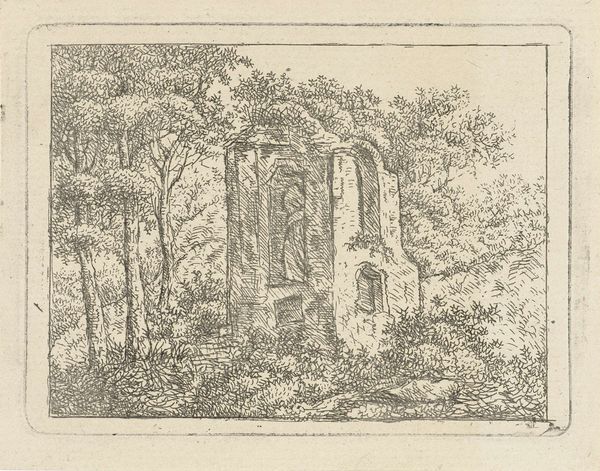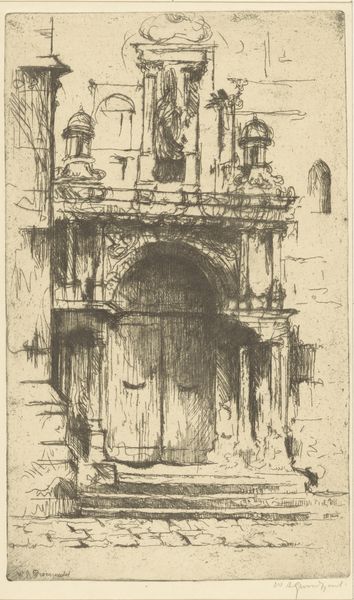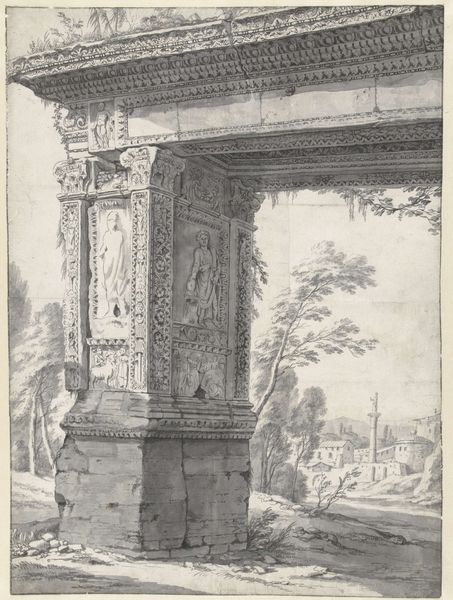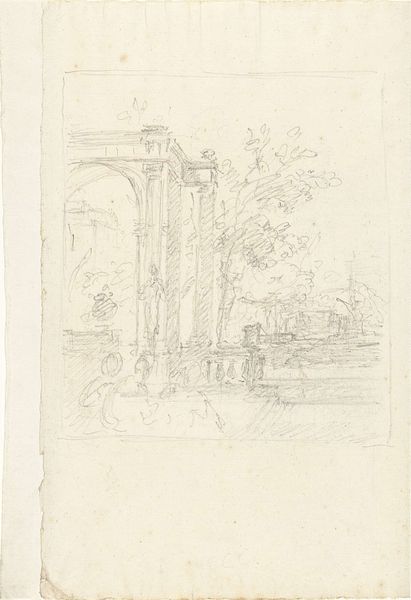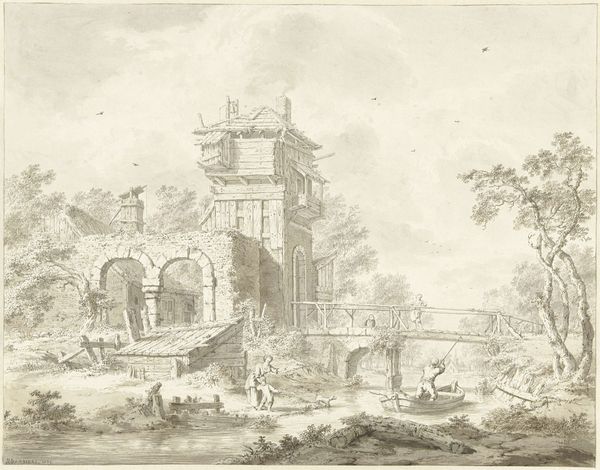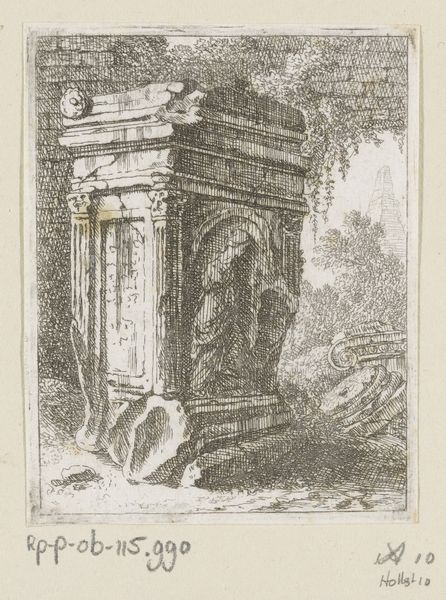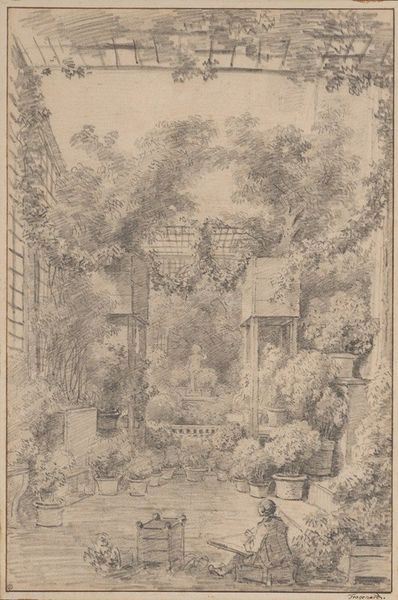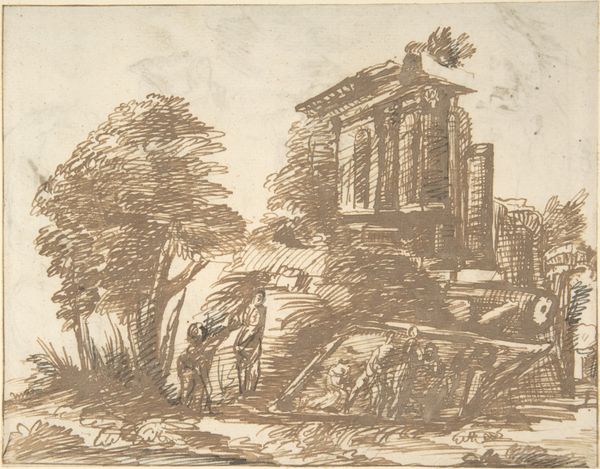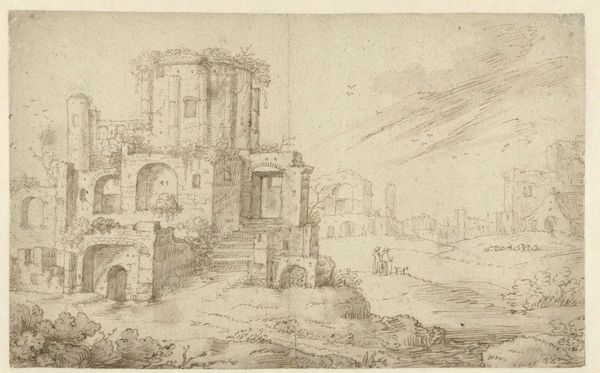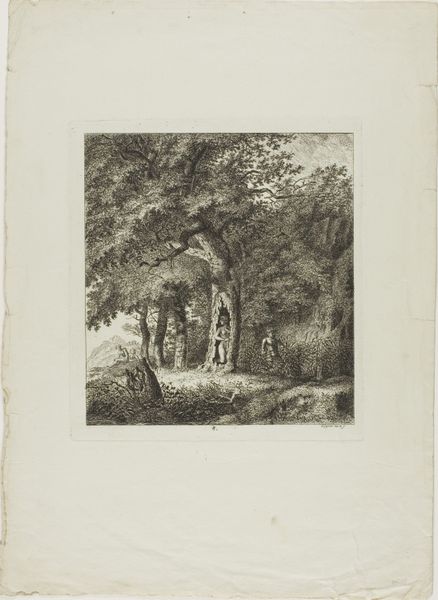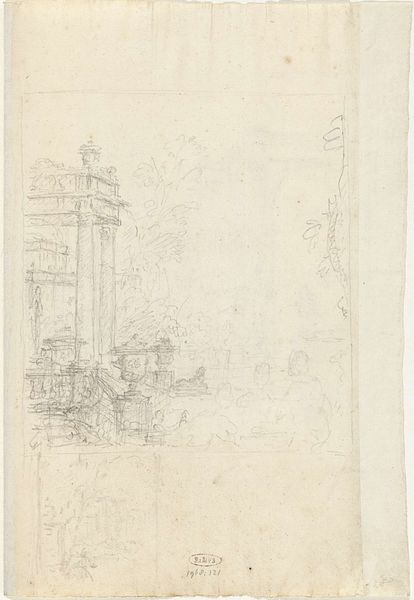
etching
#
baroque
#
etching
#
landscape
#
etching
#
history-painting
#
realism
Dimensions: height 128 mm, width 95 mm
Copyright: Rijks Museum: Open Domain
Curator: Well, this gives me a powerful sense of melancholy, like peering through the veil of time. All those crumbling bricks whispering stories of forgotten empires. Editor: This is "Landscape with Ruins" by Bartholomeus Breenbergh, created around 1639. Breenbergh was known for his Italianate landscapes, even spending considerable time in Rome, and you can definitely see the influence of the Italian countryside in his work. This is an etching, a printmaking technique that allowed for the creation of multiple copies, helping to spread his vision far and wide. Curator: Ah, yes, Italy... I sense a visual encoding of Ozymandias here: "Look on my works, ye Mighty, and despair!" There is a message about transience and how time devours even the grandest of human ambitions. I almost wonder if it acts as an ars moriendi. Editor: I see that, definitely! But, there's a strange juxtaposition too. Life reasserts itself, look at how the foliage is growing on and through the ruins. Nature reclaims what's been left behind, that symbolises continuity amid decay. Plus, there's almost a romantic aura—the artist and companion at the bridge almost echo this mood! Curator: That’s an insightful take, highlighting the eternal dance between decay and renewal, it softens the piece a great deal! Did the classical ruins symbolize the cyclical rise and fall of civilizations, reminding viewers of the impermanence of earthly power? Editor: Absolutely. But also remember that at this time, "ruin art" became all the rage, too. Prints like these fed into the Northern European's image of what the former "glory of Rome" now looked like. A travel memento that spoke of deep understanding! Curator: And that in itself says a lot, too. It’s about capturing, cataloging, and re-evaluating those fragments of past civilizations! These structures almost take on the aspect of cultural palimpsests, preserving and transmitting forgotten experiences through history. Breenbergh acts, essentially, like a documentarian, reminding viewers of cultural memory. Editor: So, we see echoes, decay, the power of nature and enduring stories captured in ink... Pretty strong for something etched over 300 years ago! Curator: Indeed! Its melancholic beauty lingers and leaves much to contemplate.
Comments
No comments
Be the first to comment and join the conversation on the ultimate creative platform.
